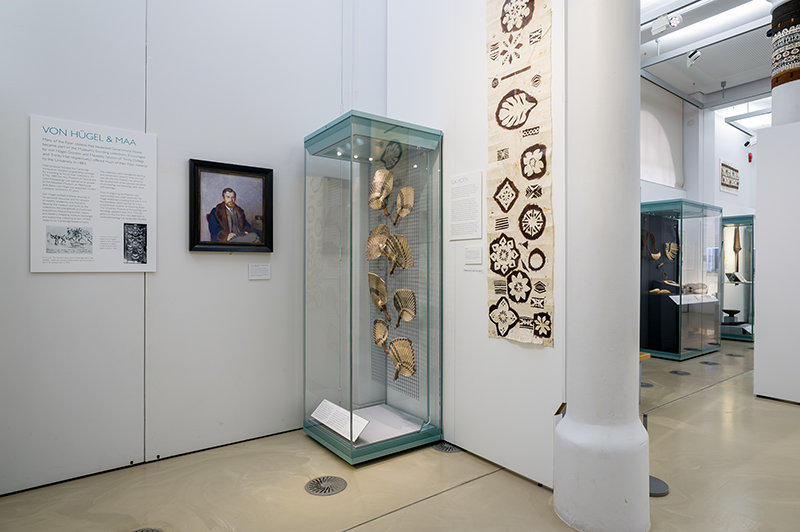Numerous people have assisted with building up and researching MAA's Fijian collections. Since von Hügel, George Kingsley Roth made the most significant contribution. A colonial administrator in Fiji between the late 1920s and 1950s, Roth gathered hundreds of objects, photographs, archival documents and sound recordings.
Roth took the diploma in Anthropology in Cambridge under Alfred Haddon. During his time in the colonial service he became fluent in Fijian and dedicated himself to the study and recording of aspects of Fijian culture. He maintained strong conections to Cambridge, donating Fijian material to the Museum over several decades. Unlike his Victorian predecessors, his attention focused on processes, techniques and variations. His collection was a series, containing everything from the raw materials to the finished product as well as the tools employed in an object's manufacture.
After his retirement from the position of Secretary for Fijian Affairs, he was appointed Honorary Curator for the Fijian collections, a task continued by Jane Roth after her husband passed away. The Roth material at MAA is exceptionally well-documented and covers a broad geographical range, including artefacts from the island of Vanua Levu.
Use the drop down menu below to explore the objects in this section.
Decorated with thirty-seven stencilled motifs, this piece is not a typical example of Fijian barkcloth or a copy of a masi G. K. Roth encountered in Fiji. He commissioned it from women in Vatulele to record the existence, name and geographical affiliation of stencilled patterns. Many of these motifs had been in use for decades by the late 1950s, and continue to adorn barkcloth today. They are an important part of Fijian cultural heritage.
Vatulele Island, Fiji. Collected by G. K. Roth, 1957. 1963.209
These fans are part of a series of twenty collected by G. K. Roth in Tailevu. Four illustrate the various stages of manufacture, from the very beginning to near completion. The remainder (of which eight are shown here) display the many variations obtained with identical materials and techniques. Roth provided the following note:
"Fans, set of 16, to illustrate different designs... The body of the fans is made of strips of coconut leaflet. The black colour is obtained by burying the leaflets in black mud for 4 days. The handles are bound with sennet [coir]. The black colour in the sennet is obtained as described above. Other colours such as green and heliotrope are dyes which may be bought at an [sic] European store."
Fans, Iri
Eight fans made of coconut leaf bound with plaited coir.
Tailevu, Viti Levu, Fiji. Collected by G. K. Roth, 1932. From top to bottom, left to right: 1932.660; 1932.658; 1932.663; 1932.657; 1932.659; 1932.664; 1932.665; 1932.666




